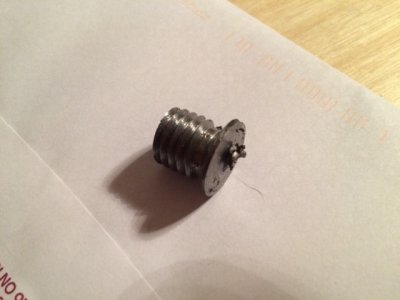
So, using a 5/8 rod, turned down to .495", with a 1/2-13 thread, using a HSS tool instead of a carbide tipped cutter, and running at about 175 RPM, it went better [so the speed is faster due to both a larger work piece and higher spindle RPM], the leading edge looks much cleaner, top of the threads are all there [earlier one a bunch of tips looked like they tore off].
It's still not great, as when I got close to the end and was trying to do a spring pass, instead it did a really good cut, so the thread is sharp to the touch, when it should have flat tops. Given that I only was manually adjusting the compound slide in and out, and using the motor to move the saddle back and forth, I think that maybe running the tool bit into the main bar a little may have shifted it slightly [I did put a relief cut at the end of the thread, but the tip of the HSS cutting doing the thread was in the middle, so the relief cut wasn't wide enough for the thread bit to not dig into the bar on the other side of the relief cut.
But, things learned:
-don't repurpose a cheap plastic bike water bottle as a coolant dispenser...you may not think about it and try to use it as a water bottle...just about took a good load it in my mouth before remembering I don't have a water bottle
-HSS cutting tools work better at lower speeds than carbide tipped tools, particularly if they have really pointy ends
-the parting tool takes much less effort than a hacksaw. I guess the steel rod is still relatively weak [vs other types of steel], as the part breaks off with a 3/16 nub instead of getting right to the center.
-got better at using the foot brake to stop the saddle from going to far in either direction
-did a little turning down of the diameter of the rod, which is pretty straightforward, particularly using the power feed. still looks like tiny little threads...


 Steve Shannon
Steve Shannon